Young Joon Kwak and I met a week before his solo-show, Eating Without A Face & Death Rites. The work was inspired by his time spent at the ACRE residency this previous summer. Everything was near completion. His studio was full of works-in-progress and was largely based around the idea of compost (what was a practical aspect of life at ACRE). Roxaboxen Exhibitions, the site of his exhibition, used to be a funeral parlor and Young’s studio is in the basement. Running alongside the stairwell, there is a ramp that used to bear coffins between floors; it is possible that bodies were prepared in the same room Young uses as a studio, what feels fitting given the topic of our conversation and his interest in life/death cycles. In all his work, as a writer, performance artist, collaborator, and sculptor, he strives to occupy the liminal space between identifiable categories in order to maintain a level of freedom. As such, the traditional identity of the singular, static self is a constantly shifting, accumulation of parts. Similarly, the “artist” as a singular and possibly heroic identity is problematic and something Young struggles to shed. Culling his materials from banal sites of everyday life, he appropriates objects already imbued with meaning, samples and reconfigures them in order to devise an uncanny experience.
Young Joon Kwak: Jasbir K Puar’s book Terrorist Assemblages solidified a lot of what I was interested in about trauma, affect, and queer theory. She talks about how people are kept in line as citizens and the cooption of queer identities—the nature by which any attempt to produce a new subjectivity eventually gets co-opted into the system of capitalism. Puar proposes the “assemblage,” as a theoretical framework for imagining new forms of agency. Rather than normative static identities, the assemblage is formless, fragmented, and always in transition—falling apart and coming back together. A sort of continual cycle of death and regeneration. Puar talks about affect as that which is of outside commodified senses: indescribable bodily sensations, weird ticks, or feelings. Throughout the year I was trying to imagine empty spaces, these holes or gateways, that are the passageways for affect. The seams between the fragments of the assemblage, wherein unexpected interactions and transformations may occur.
I think a lot about how I can address the normative politics and social boundaries that make people feel trapped and powerless, and I’m in my own head a lot, but at the same time I don’t think I can solve anything. Art doesn’t have any affect. People don’t give a shit about art. I see my work not as a means for a solution, but as a means to work through those issues for myself, and to create affective encounters for others to contemplate those same issues. I appropriate mass media identifications—these things of desire, of femininity, of gender and class and race and stuff like that—and then I reorder them, fucking them up and making them weird. The hope is that I’m invoking some kind of affective response through the forms at play. Like, it’s fun to fuck with identity!
Caroline Picard: When you say, these things, what do you mean?
YJK: In the case of my sculptures, just plain materials. Wigs. Makeup. Heels. Fur. For instance I get my wigs—they’re synthetic cheap wigs, the packaging is all like black ladies and Latinas—at wig stores that cater to black and Latina ladies, largely of a certain class, drag queens, and also those who just want costumes for a party or something. (See Queen, I’ll Fuck You Up)
I think about these sculptures as assemblages that transform their materials and make them strange. I take things that are used to make somebody beautiful in order to subvert the convention of “beauty” in the use of those materials.
CP: You mentioned that drag is symptomatic of traumatic experience, that it offers the possibility of transformation. So when you say “strange” I wonder, if you purchase a wig from one of those stores and then bring it into your own work, do you feel like that resulting strangeness your aiming at—is that of transformation? Or is symptomatic of trauma…?
YJK: I think it could be both, not simply a symptom of trauma, but making it uncanny. We can’t avoid symptoms of trauma because we’re all traumatized to some degree! We’re all subjects, and drag is a great example of this and also our complicity and contingency on identifications in mass media. So it’s about kind of a reflection, going back and then understanding that you can’t create something from scratch, and so you take that which is already around you to make new combinations.
A lot of my sculptures look like shit. (see Still Moments) They’re made of cardboard and tape and dollar synthetic hair extensions and wax—they’re constantly falling apart. They’re not archival by any means. The wax always drips and changes. The tape unfurls. They’re ugly. They’re not desirable or pretty and sexy—
CP: I feel like the work in your Doomsday show is pretty sexy. It’s very visceral, right?
YJK: It invokes a bodily response—
CP: There’s something aggressive about them, I think. And they’re riddled with orifices, which you’re physically engaged with because they’re big.
YJK: I guess I’m interested in the interplay between sexy and gross. I use glossy, tactile materials but then try to evoke this sort of “ick” factor. I’m interested in getting someone to that place of feeling “Ick,” and then what that reveals about a person’s perception of desire.
And doing drag is like a fun way of playing with normative perspectives of desire; often when I’m in drag, a lot of girls love it, and a lot of straight guys don’t—it’s repulsive to them—and a lot of gay guys find it repulsive too. Like it’s like too gay or something like that. Drag doesn’t make me more desirable.
CP: I was thinking about this idea of assemblage because I feel like, if you’re talking about your drag performance, how you’re kind of drawing on identifications that are available in popular culture and then you’re appropriating them and reconfiguring them in some way—in your sculptural/visual work, you do the same thing in addition to drawing on art historical references. You incorporate those histories and rework them—it’s like you have this very democratic approach about what you appropriate.
YJK: I guess art history is inescapable, like mass media identifications—I’m actively engaging with these things, through ambivalence. I’m not performing a certain stuck-ness—I think my work is kind of hopeful—taking these materials things from mass culture and then making something that’s weird, that destabilizes the use-value of those materials. I guess what I’m striving for is a radical contradiction, an affective contradiction.
CP: This geos back to when you said you feel like art isn’t an affect, but it seems like via the work you create you hope to inspire an affect?
YJK: Art in and of itself has no affect until somehow it does. Until I guess it gathers certain momentum and suddenly mobilizes people to feel something. which of course, is then immediately commodified…
CP: That’s sort of why you want to stay unstable…so that you can’t be commodified.
YJK: Well, it’s about trying. It’s like going back to the imperative of the continuing death and rebirth of the artist. Art practice is a performance.
CP: That reminds me of when you auditioned for the reality TV show—
YJK: Oh gosh, I’m really glad that I’m not on that show! (laughs). It’s entertaining, though. It’s a good program. It’s fun. And the artists are characters/contestants on this show. And I’m just glad I’m not in it!
I was really torn up about it and felt a lot of anxiety about it. And worry. But that had to do with the place I was at that time. Like generally feeling more confused at that time and stuck and melancholic along with this desire for my art to have more affective potential through widespread exposure.
CP: For sure. I mean, how do you turn that down, right?
YJK: Right, I doubted that there was another way. I think that a lot of the people who apply for that show feel like, in relation to this big art world, they’re completely impotent, and this is their one shot. I mean celebrities are like the goddesses and the deities of our time and that’s like the apex that one can aspire to. Like achieving celebrity will make the artists on that show whole. It means the world to them—and it makes for great TV.
Instead of going on the program, I learned more about the system that made me feel powerless and it gave me more motivation to address that—my artwork has grown a lot since then.
CP: I feel like both you and I have spent a lot of time like thinking about or working in the contemporary art community, and doing these different sort of grassroots spaces and DIY spaces and all that stuff—and I feel like that’s one way to counter a sense of irrelevance.
YJK: Yea, yea, and I think that’s so important. Who knows if that actually does anything. It doesn’t really, when you think about it; the idea of being this island that’s completely free of the conditions of greater society is a myth. Furthermore, the more you think about it in that way, it’s just like you’re marginalizing yourself.
But what I think is important is that like it provides a mobilizing affect. It does promote this collective feeling of agency.
CP: Will you talk a little about having an exhibit in the Doomsday Building?
YJK: The building housed the Doomsday clock—you imagine it’s this place that’s full of ghosts in the way of untold stories and just the people related to this giant, life-killing/society changing thing. It adds to the meaning of the work to think about all of those things and the feelings associated with those things.
CP: Do you feel like that particular venue had more of an affect because of its history?
YJK: I hope so, but I can only set up a situation in which affective encounters with a viewer may or may not occur. So it’s an experiment and it is kind of like consciously taking these different elements and putting them together. Having the show in that big mansion turned-artist studio owned by UChicago is so different from the typical neutral-seeming art venue.
CP: And then here at Roxaboxen, which is a different story.
YJK: I’m cognizant of that—that’s why it’s important to me that these sculptures be like part of the space. To make you think about the space you’re in, and you’re body’s relation to the sculptures, and other bodies.
CP: It sounds like you’re trying to cast a spell of some sort—so you bring in these different elements and then it’s like you configure them according to a particular aesthetic, to see if the audience is moved—
YJK: I haven’t really thought of it like that, but I guess there’s a fair amount of throwing things together, without knowing fully what the outcome will be. For instance, with my show, I’m curating this performance program [Death Rites], in which artists interact with my sculptures [in Eating Without A Face], or perform something that is thematically related, which is exciting because it’s something I’ve never done before. I wanted other artists to come in and directly physically become part of the creation of meaning in the work. It’s not just about me, it’s about this exchange of power and the meaning of the work being collectively generated, rather than by the singular authority of the artist.
And who knows how things will play out…but I think this interview is a way of framing the work also. I think it’s important to expressly put those ideas out there—that’s part of my politic. I’m not always in the basement pacing around—well, I have been lately—but normally I’m not like pacing around thinking about these problems, it’s just like this is what I want to put out there.

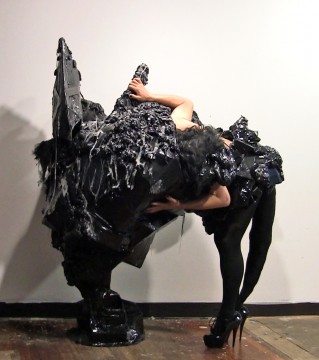
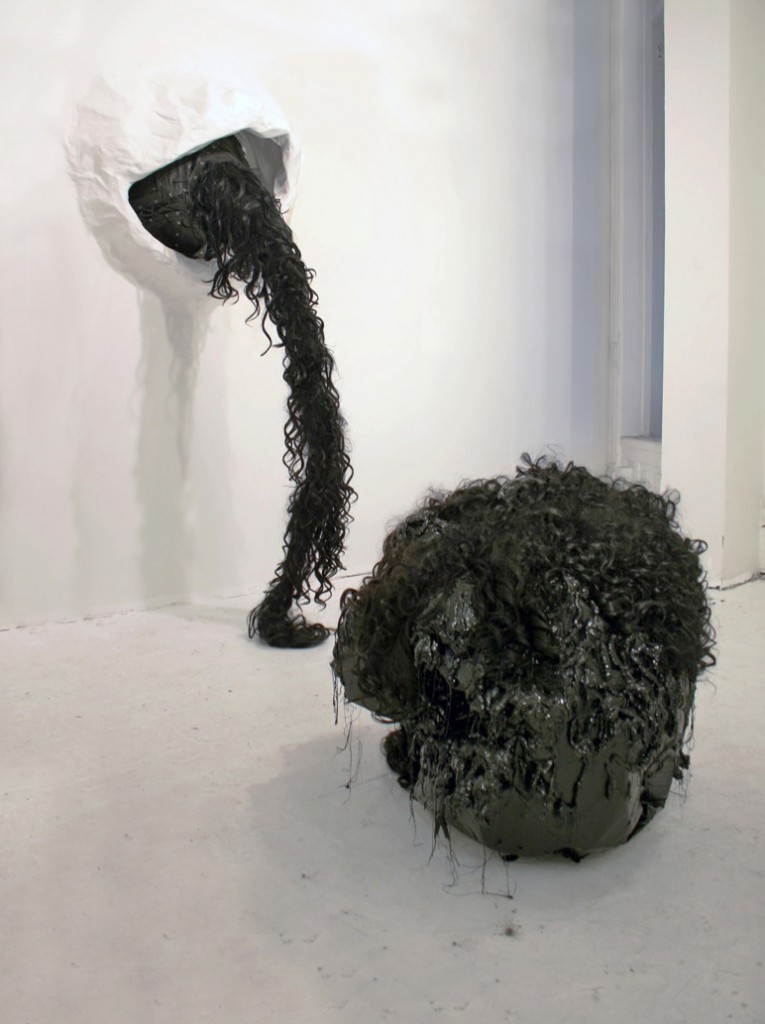
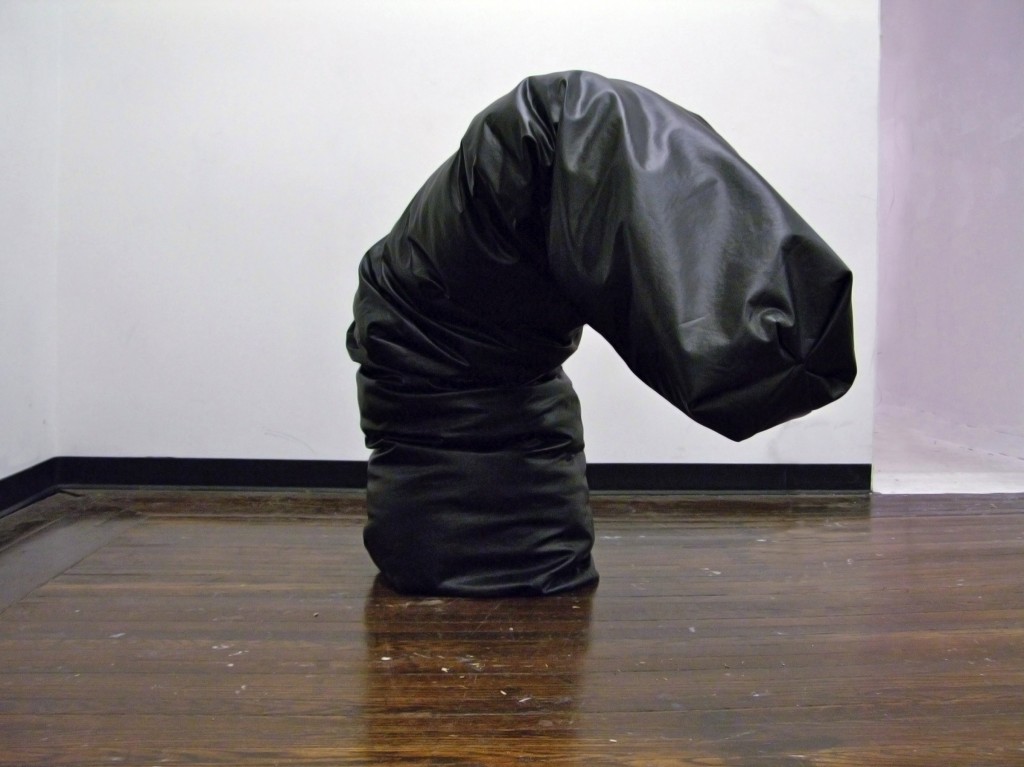
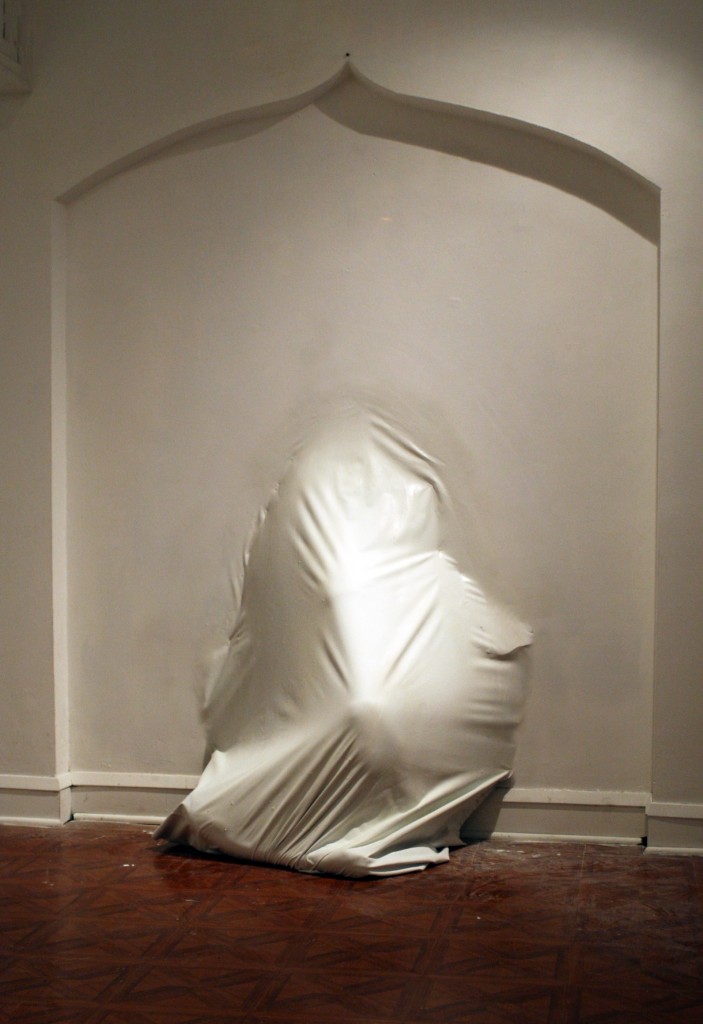
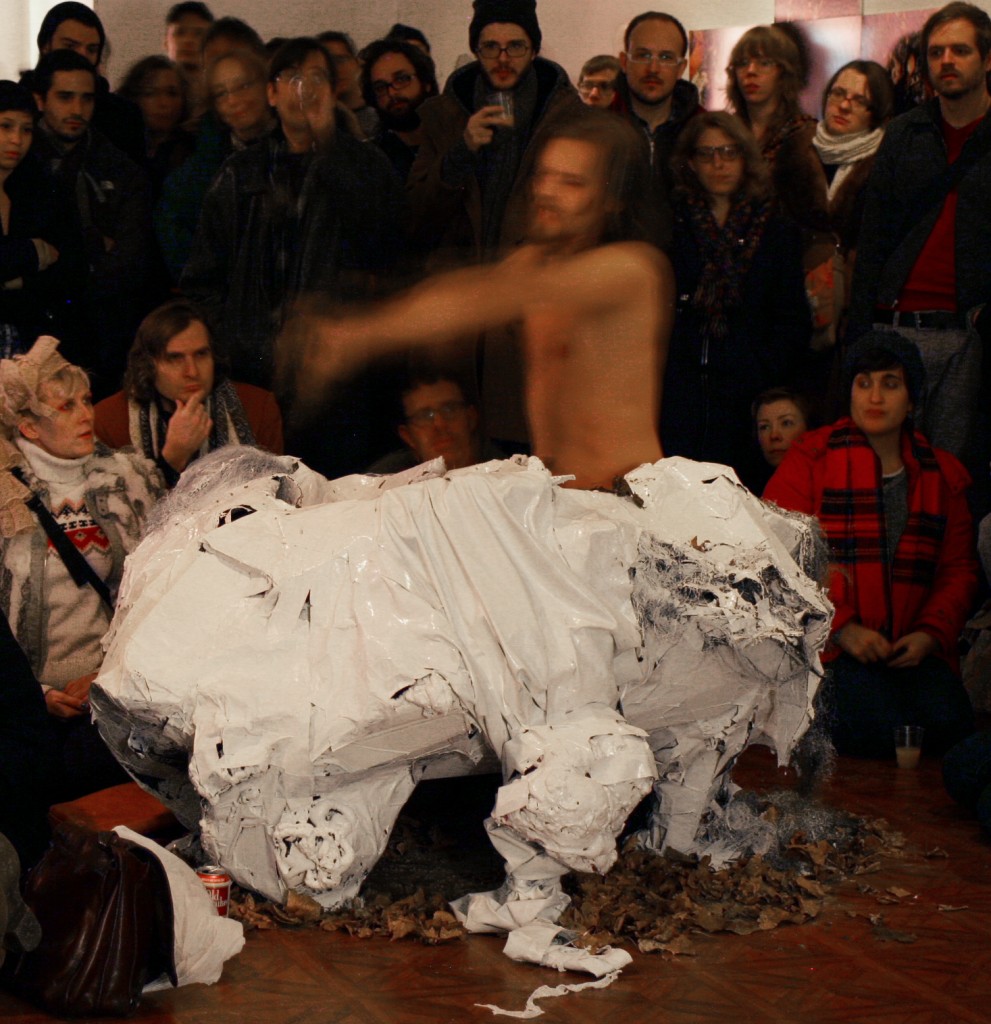



Pingback: Young Joon Kwak on Art21 | The Lantern Daily
Pingback: young joon kwak/doomsday building | POSTstudio